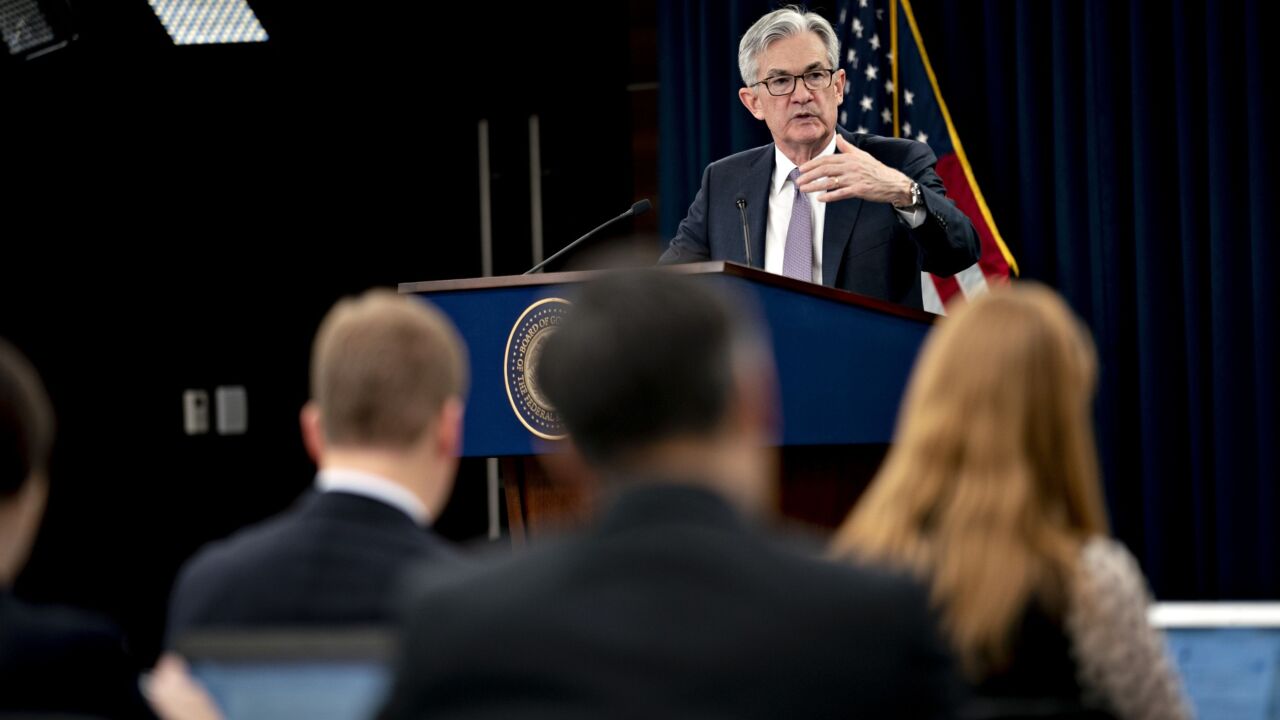The Federal Reserve remains committed to reducing inflation through credit tightening, but that isn't stemming the increase in consumer credit card balances—or delinquencies.
Credit card balances rose to a record $1.13 trillion in Q4 2023 from $1 trillion in Q4 2022, according to the Quarterly Report on Household Debt and Credit from the Federal Reserve Bank of New York. Delinquencies have also been rising on an annualized basis, reaching 8.5% in Q4 2023, based on data from the New York Fed Consumer Credit Panel and Equifax.
"Fed figures show that, since bottoming out at 7.59% during Q3 2022, balances 90+ days delinquent rose to 9.74% in Q4 2023," said Celent principal analyst Craig Focardi.
That looks like a drastic change on the surface, but delinquencies are tracking below record highs seen after the global financial crisis, say analysts. Securitization issuance is expected to increase in 2024 as a source of funding and liquidity to banks dealing with quantitative tightening.
"In recent years the volume of credit card ABS issuance has largely been driven by refinancings of maturing bonds," said Kayvan Darouian, director, consumer ABS research at Deutsche Bank Securities. "Since maturities are higher in 2024 versus 2023, we expect issuance to rise this year."
Rising delinquencies are reflected in Fitch Ratings' Prime 60+ Days Delinquency Index based on its ABS credit card indices data, which reached 1% in Q4 2023.
Although delinquency rates have been rising, they have done so from an unusual pandemic low, when 60+ day delinquencies fell to 0.55% in September 2021, said Darouian. That compares with a high of 4.54% that Fitch reported in December 2009.
Mike Nowakowski, head of structured products at Conning, agreed that recent delinquency numbers are a normalization after the benefits of COVID-19 stimulus payments.
"To put these numbers into context, consumer credit card debt as a percentage of income fell to 3.5% due to the pandemic-related stimulus," Nowakowski said. "In the build-up to the global financial crisis, it was as high as 7%, and in the post-Global Financial Crisis era (2011-2019) this ratio hovered around 5%. We're getting back to that same 5% level."
Not all consumer demographics have been impacted equally, with upper-income households faring better than lower-income households, who, because of weak underwriting, may have taken on too much debt in the COVID era.
The large master trusts comprising the S&P Global Ratings Credit Card Quality Index (CCQI) ABS index found that the 30+ day credit card delinquency rate was 1.45% in November 2023, Darouian said. However, the 30+ day loan delinquency rate for credit cards from all insured commercial banks was 2.97%, according to Federal Reserve economic data from the Federal Reserve Bank of St. Louis.
The eight largest U.S. domiciled securitized credit card receivables master trusts comprising the S&P CCQI index benefit from better performing, more seasoned accounts compared with the overall credit card market, according to Darouian.
Pedro Sancholuz Ruda, a vice-president, senior credit officer at Moody's Investors Service, expects credit card delinquencies to rise back to historical norms, but doesn't expect ABS issuance to be impacted by that trend.
As 2024 rolls on, new consumer credit card debt will be subject to tighter underwriting, said Warren Kornfeld, senior vice president at Moody's Investors Service. He expects credit card balance growth to slow, but, at 5% to 7.5%, remain above GDP growth in 2024, mostly due to households under financial pressure using revolving debt to meet living expenses.
"While there may be some room for additional weakening, we feel as though we are nearing an inflection point for credit card performance as inflation and borrowing costs begin to fall," said Nowakowski.
Banks, meanwhile, are continuing to look to the securitization market for liquidity, Kornfeld said.
"The Fed is still going through quantitative tightening and funding conditions are under pressure," he said. "So, focusing on their liquidity and funding needs, banks will continue to access the securitization markets in 2024."





